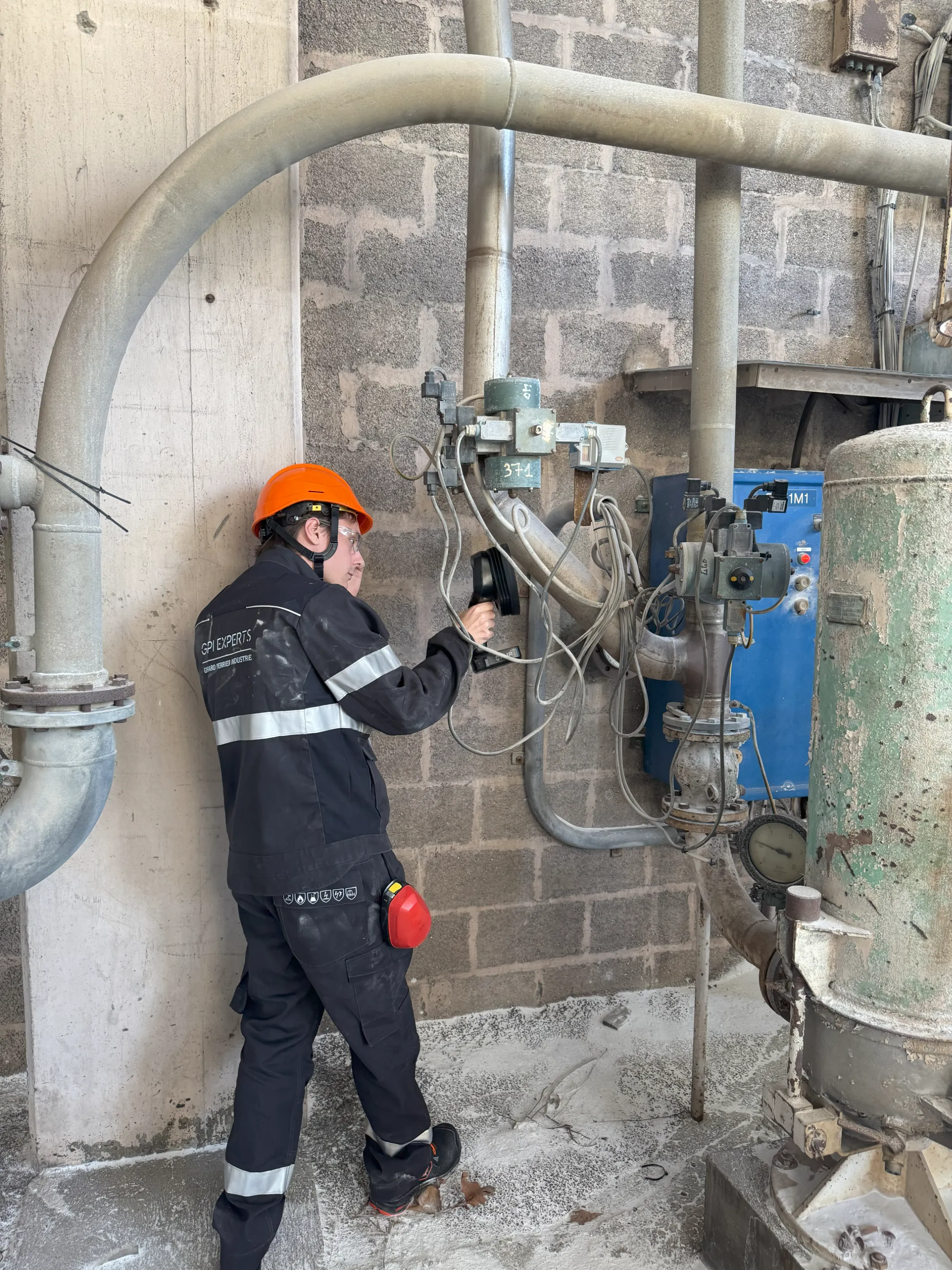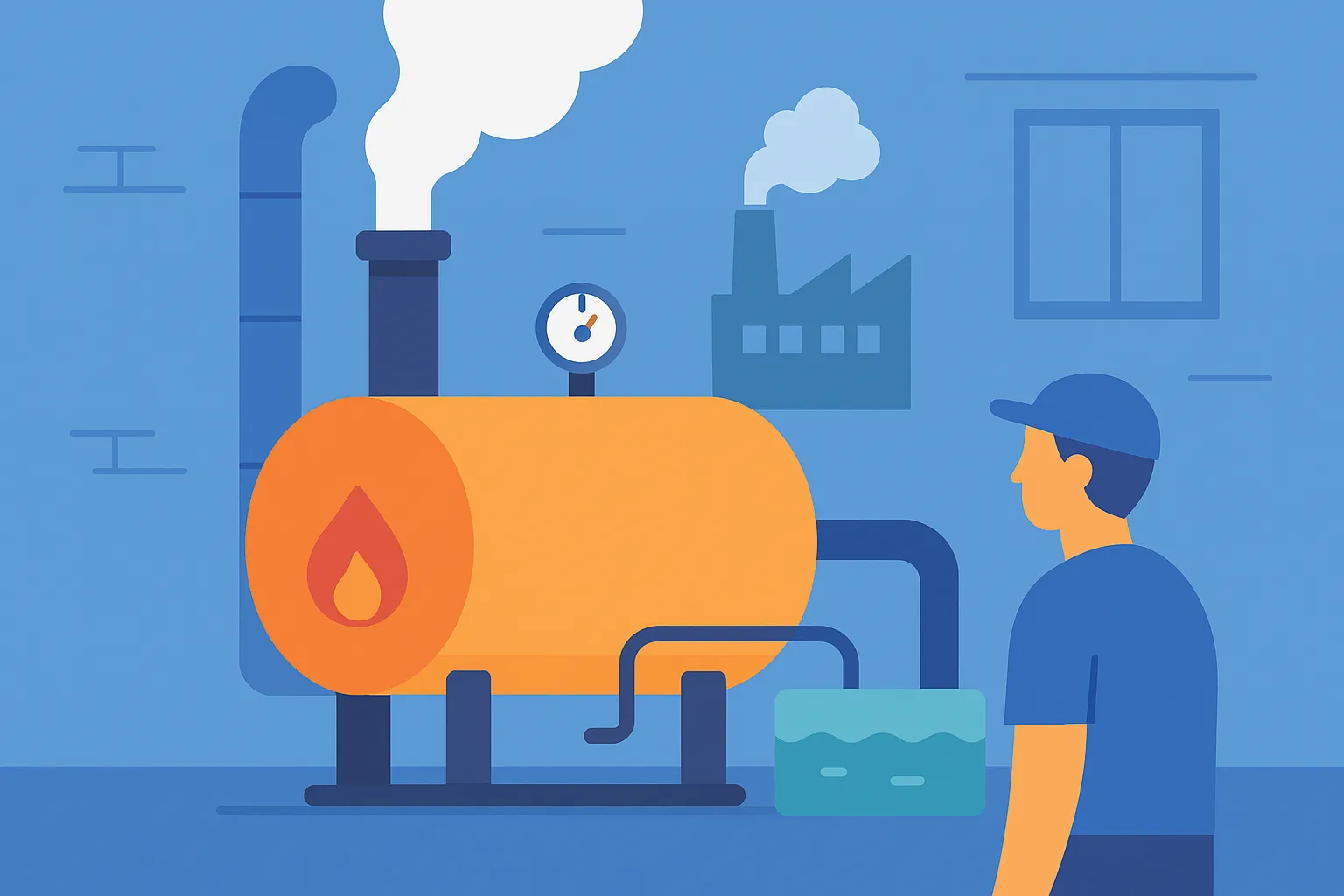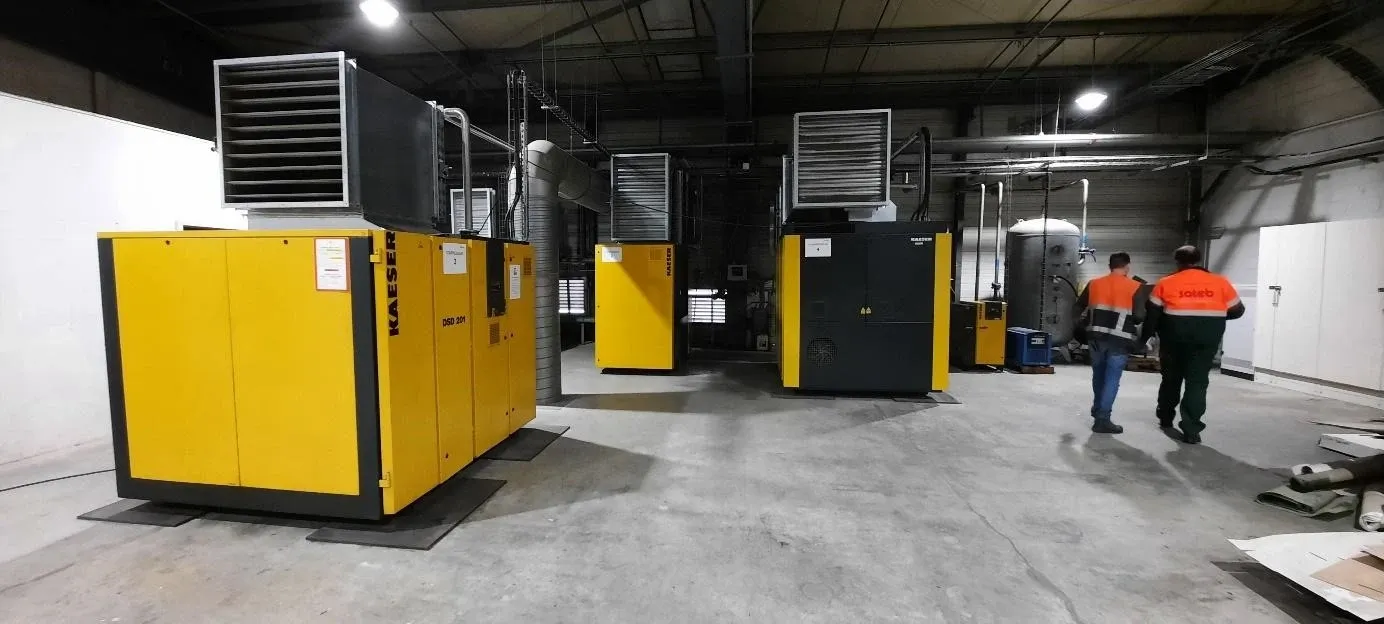
The Benefits of IIoT for Energy Management in Industry
The BACS GTB decree requires office and administrative buildings to implement building automation and control systems (BACS) to optimize energy management. What are the objectives of this regulation? Who is affected, and how can compliance be ensured? This article covers everything you need to know about the BACS decree.
BACS Decree: Compliance Requirements for Industrial Companies and Their Tertiary Buildings
Energy optimization has become a strategic priority for industrial companies, especially those with tertiary buildings on their sites. The BACS Decree mandates the installation of Building Automation and Control Systems (BACS) to enhance energy performance and reduce the consumption of technical systems such as heating, ventilation, and air conditioning.
But who is affected by this regulation? What are the compliance requirements and deadlines? This article provides insight into the BACS Decree, its scope of application, and the key steps for meeting regulatory expectations.

Objectives of the Regulation
The BACS Decree aims to reduce energy consumption in tertiary buildings by requiring the implementation of Building Management Systems (BMS). These systems enable automation and optimization of technical equipment operations, thereby contributing to:
- Avoiding energy waste through smart control systems.
- Monitoring real-time energy consumption to quickly identify anomalies.
- Reducing energy costs for affected companies.
- Aligning practices with European environmental targets, including the Tertiary Decree and the National Low-Carbon Strategy (SNBC).
Key Objectives
- Energy savings: deployment of intelligent BMS capable of adjusting consumption based on actual needs.
- Environmental performance improvement: lowering the carbon footprint of tertiary buildings by reducing energy use.
- Practice standardization: establishing a consistent regulatory framework for tertiary buildings, including those located on industrial sites.
Target Audience
The BACS Decree applies to non-residential tertiary buildings equipped with heating, cooling, or ventilation systems with a power output exceeding 70 kW. Entities concerned include:
- Industries with tertiary buildings: factories with administrative offices, laboratories, logistics warehouses.
- Standard tertiary buildings: offices, retail spaces, hospitals, educational institutions.
Requirements based on system power:
- Power > 290 kW: compliance required by January 1, 2025.
- Power > 70 kW: compliance required by January 1, 2027.
Special cases: Exemptions may be granted if an economic study shows that BMS implementation is not cost-effective within 10 years.
Expected Impact of Compliance
Affected companies must anticipate major changes in their energy management, including:
- Reduction in energy consumption: up to 30% savings through system optimization.
- Operational cost optimization: lower energy bills and reduced downtime thanks to predictive maintenance.
- Contribution to environmental commitments: lower CO₂ emissions in line with the Tertiary Decree’s objectives.
Consequences of non-compliance:
- Increased energy costs.
- Risk of sanctions, particularly through the “Name and Shame” mechanism of the Tertiary Decree.
- Negative impact on competitiveness and property asset valuation.
Scope of the BACS Decree
The BACS Decree aims to accelerate the energy transition by requiring the installation of building automation systems in tertiary buildings. But which sectors are specifically affected? Which companies must comply with the regulation? This section outlines the types of organizations impacted, as well as the technical and geographic scope of the decree.

Relevant Sectors
The BACS Decree is not limited to offices and retail buildings. It also applies to industrial companies with tertiary buildings on their premises.
- Manufacturing industry: factories with administrative buildings, laboratories, logistics zones, warehouses with heating and ventilation systems.
- Standard tertiary buildings: offices, shopping centers, educational facilities, hospitals, healthcare infrastructure, hotels, large retail stores.
Note: Even an industrial site that includes tertiary buildings (offices, labs, warehouses) must comply with the BACS Decree.
See also: The official BACS Decree guide
Targeted Organizations or Activities
The obligation applies to owners and operators of tertiary buildings using Heating, Ventilation, and Air Conditioning (HVAC) systems with a combined capacity exceeding 70 kW.
Responsibilities of tertiary building owners:
- Install a BACS system that meets the decree's technical requirements.
- Ensure energy monitoring and adjust consumption in real time.
- Guarantee interoperability between the building’s technical systems.
Responsibilities of industrial site operators and facility managers:
- Verify compliance of tertiary buildings on their site.
- Develop a compliance roadmap ahead of the 2025 and 2027 deadlines.
- Train staff to operate the installed BACS systems.
Technical and Geographic Scope
Geographic scope:
- French decree applicable throughout the national territory.
- Complementary to European directives on building energy performance.
- Indirect impact on international companies operating in France.
Technical scope:
- Any tertiary building with HVAC systems exceeding 70 kW in combined capacity.
- Applies to both new and existing buildings.
- Mandatory interoperability with existing energy management systems.
Overview of the BACS Decree’s Core Themes
The BACS Decree is built upon several core principles defining its obligations and recommendations. It is not merely a new regulatory burden for businesses, but rather a strategic framework supporting energy transition in tertiary buildings — including those located on industrial sites.

1. Automation and Energy Regulation
The main objective of the BACS Decree is to implement BACS systems that allow for automatic control of energy-related equipment.
Implementation:
- Automatic temperature adjustment based on occupancy levels.
- Energy consumption reduction during unoccupied periods.
- Centralized control systems for optimized energy management.
2. Energy Monitoring and Mandatory Reporting
The BACS Decree requires companies to continuously monitor their energy consumption and produce regular reports to detect anomalies and enable real-time energy management adjustments.
Implementation:
- Data collection and analysis to identify energy use deviations.
- Integration of reporting tools and dashboards accessible to operators.
- Alerts in the event of overconsumption or anomalies to allow quick intervention.
3. Interoperability of BACS with Existing Infrastructure
Deployed BACS solutions must be compatible with existing technical infrastructure to avoid excessive compliance costs and ensure long-term adaptability of energy management systems.
Implementation:
- Use of open and standardized protocols to ensure smooth communication between devices.
- Integration with existing software and tools (SCADA, ERP, energy management software).
- Adaptability to future industrial energy optimization needs.
Implementation and Compliance
Complying with the BACS Decree requires a structured approach to effectively deploy building automation and control systems (BACS). This section outlines key steps, best practices, and available resources to support companies in their transition.
Key Steps for Compliance
1. Conduct an Energy and Technical Audit
Before any installation, a comprehensive energy audit is essential to assess the current state of equipment and define necessary improvements.
- Identify buildings subject to the regulation.
- Analyze energy consumption and identify inefficiencies.
- Determine the required investment to deploy a compliant BACS system.
2. Select and Deploy a Compliant BACS
The chosen BACS system must meet the decree’s requirements in terms of monitoring, control, and interoperability.
- Adopt a BACS capable of automatically measuring and adjusting energy consumption.
- Ensure compatibility with existing infrastructure.
- Provide centralized management and user interface accessibility.
Concrete example: A logistics warehouse with a centralized heating system must integrate a BACS capable of automating regulation based on occupancy levels.
You can choose the DAT’Power solution for your BACS: IIoT Solutions for Energy Monitoring

3. Train Teams and Ensure Post-Installation Monitoring
A high-performance BACS system alone is not enough — it must be effectively operated by the teams responsible for energy management.
- Train technicians and maintenance managers to use the BACS.
- Schedule regular monitoring to adjust settings according to actual needs.
- Implement a preventive maintenance plan to prevent performance drift.
For instance, you can organize quarterly training sessions for your technical staff to optimize BACS usage.
Best Practices
Optimizing BACS efficiency after installation:
- Monitor real-time alerts to identify waste and anomalies.
- Analyze consumption trends to fine-tune BACS settings.
- Integrate the BACS into a broader energy efficiency strategy alongside other industrial monitoring tools.
Discover a case study of DAT’Power deployment in the Rhône-Alpes region: NINKASI Case Study
Resources and Tools to Support Organizations
Tools for compliance implementation:
- BACS monitoring software: real-time energy tracking solutions.
- Best practice guides published by ANSSI and the French government.
- Financial support: funding mechanisms to help companies in their energy transition.
Relation to Other Standards
Complementary or Related Standards
The BACS Decree is part of a broader regulatory framework, including:
- The Tertiary Decree: targets for reducing energy consumption.
Read our article on the topic here: The Tertiary Decree
- ISO 50001: a certified energy management approach.
- The EPBD Directive: European requirements for high-performance buildings.
Comparison with Other Standards
- The BACS Decree enforces a technical means (BACS) to optimize energy consumption.
- The Tertiary Decree sets energy reduction targets to be achieved over time.
- ISO 50001 is a voluntary approach, unlike the legal obligations of the BACS Decree.
Updates and Current Developments
History and Recent Updates
- 2020: Publication of the BACS Decree.
- 2024: Applied to new buildings with HVAC systems > 70 kW.
- 2025–2027: Deadlines for existing buildings depending on system capacity.
Future Trends and Expected Reforms
- Strengthening of requirements to align with European climate goals.
- Gradual integration of new IoT technologies into BACS.
- Increased harmonization with other energy and environmental regulations.
Benefits and Challenges
Business Benefits
- Lower energy costs through better control of consumption.
- Improved occupant comfort through optimized regulation.
- Enhanced property value by aligning with modern standards.
Challenges and Limitations
- High upfront investment for BACS system installation.
- Integration complexity with incompatible existing equipment.
- Need for staff training to fully utilize BACS functionalities.
Resources and References
- Official text of the BACS Decree: Decree No. 2020-887 dated July 20, 2020.
- Practical guides and official documents: ADEME, Ministry of Ecological Transition.
- Reference publications and studies: ANSSI, ENISA, organizations specializing in energy efficiency.

The BACS Decree requires industrial stakeholders and tertiary building managers to undertake essential modernization to improve energy management. While it involves initial investment, its benefits in cost reduction, performance enhancement, and regulatory compliance make it a strategic opportunity.
Need support with compliance? ➡ Discover our industrial monitoring solutions
Frequently Asked Questions (FAQ)
What is the BACS Decree and why was it introduced?
The BACS Decree (Building Automation & Control Systems) mandates the installation of Building Management Systems (BMS) in tertiary buildings to improve their energy performance. It is part of the national strategy to reduce energy consumption and optimize technical systems.
What types of buildings are covered by the BACS Decree?
The decree applies to non-residential tertiary buildings equipped with heating, ventilation, or air conditioning (HVAC) systems with a capacity greater than 70 kW. This includes offices, retail spaces, hospitals, and also tertiary buildings integrated into industrial sites (offices, labs, cold storage areas, etc.).
What are the deadlines for compliance?
- January 1, 2025: mandatory compliance for tertiary buildings with HVAC systems over 290 kW.
- January 1, 2027: requirement extended to buildings with HVAC systems over 70 kW.
How can I know if my building requires a compliant BACS system?
An energy audit will assess the HVAC system capacity and determine whether BACS installation is mandatory. Companies can also consult the technical documentation provided by their heating and cooling equipment suppliers.
What are the main obligations for operators and owners of tertiary buildings?
Operators and owners must:
- Install a Building Management System (BMS) that meets the decree’s requirements.
- Ensure continuous energy monitoring and real-time consumption optimization.
- Maintain interoperability of systems with existing infrastructure.
- Establish a maintenance plan and provide training to technical teams.
What are the penalties for non-compliance with the BACS Decree?
There are no specific fines outlined in the decree itself. However, failure to comply may lead to several consequences:
- Higher energy costs due to inefficient consumption.
- Difficulty complying with the Tertiary Decree, which sets mandatory energy reduction targets.
- Devaluation of buildings as environmental standards become more stringent.
Are there financial incentives to support BACS Decree compliance?
Yes, several programs are available to help companies with their energy transition, including:
- ADEME grants for modernizing tertiary buildings.
- Energy Savings Certificates (CEE), which provide financial support for BACS system installations.
- Local or regional subsidies, depending on the industry and geographic area.
What is the link between the BACS Decree and the Tertiary Decree?
The Tertiary Decree requires progressive reductions in energy consumption for tertiary buildings. The BACS Decree is a key enabler for meeting these targets, by automating energy savings through smarter management of technical systems.
What are the concrete benefits of a BACS-compliant system?
- Up to 30% energy savings through more accurate monitoring and control.
- Improved occupant comfort thanks to better heating and cooling management.
- Lower maintenance costs by anticipating equipment malfunctions.
- Compliance with environmental regulations, increasing the building’s value and energy performance.
Which solution should you choose to comply with the BACS Decree?
Industrial stakeholders and tertiary building managers must select a BACS compatible with their existing infrastructure, capable of automatically monitoring and adjusting energy consumption. Discover DAT’Power, our IIoT solution for optimizing your building’s energy management.





